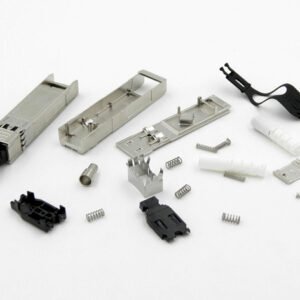Understand Mould Design
Mould design is a critical aspect of manufacturing and production environments. It is a blueprint for creating a large number of parts and products. The core of mold design is to shape materials (usually plastics) into the desired shape. This process is crucial for achieving precision, efficiency, and consistency in production. Therefore, it is indispensable for various industries from automobiles to consumer goods.
The key components of the mold include the cavity, core, and ejection system. The cavity and core are the main components of the mold, which shape the material into its final shape. At the same time, the ejection system facilitates the removal of finished products from the mold, ensuring a seamless manufacturing process. Understanding these components is crucial for designing molds with optimal functionality and producing high-quality products.
Introduce Mould Design
Material selection for moulds is another fundamental aspect of mould design. The chosen material must possess properties that align with the specific requirements of the moulding process. For instance, materials for injection moulds typically need to be durable, heat-resistant, and capable of withstanding high pressures. Common materials include various grades of steel and aluminum, each offering unique trade-offs in terms of cost, durability, and thermal conductivity.
The Role of Moulds in Manufacturing Industry
In the realm of mould design, the integration of advanced techniques and best practices is crucial for achieving precision and efficiency. One significant advancement is the adoption of computer-aided design (CAD) and computer-aided manufacturing (CAM) software. These technologies have transformed the landscape of mould design by enabling designers to create highly detailed and accurate models. CAD software allows for intricate design specifications, while CAM software facilitates precise manufacturing processes, ensuring that the final product meets exacting standards.
Precision engineering and tolerance control are fundamental aspects of mould design that cannot be overstated. The quality and functionality of the final product are heavily influenced by these factors. Precision engineering involves meticulous attention to detail in the design process, ensuring that every component fits perfectly. Tolerance control, on the other hand, ensures that the differences between the designed and manufactured parts are minimized, thereby reducing errors and enhancing product quality.
Maintaining and extending the lifespan of moulds is another critical aspect of best practices in mould design. Regular maintenance, including cleaning and inspection, can prevent wear and tear, thereby prolonging the usable life of the mould. The application of protective coatings can also enhance durability by reducing the risk of corrosion and abrasion.
Case studies of successful mould design projects offer valuable insights into practical applications of these advanced techniques. These real-world examples highlight how strategic approaches and meticulous attention to detail can lead to exceptional results, underscoring the importance of staying abreast of technological advancements and industry best practices in mould design.
We sincerely hope to cooperate with you to build our future together!


